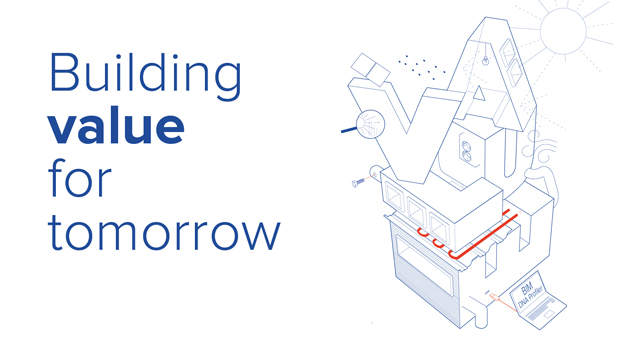The transition towards a more circular built environment is essential to reduce the resource intensity and waste created in the present construction industry.

The transition towards a more circular built environment is essential to reduce the resource intensity and waste created in the present construction industry. As a material that can be reused and recycled, steel fits well with this sustainable approach. But sustainability doesn’t stop at a product-level. There is more to it. Tata Steel wants to take a leading role in this subject matter.
To bring its knowledge as a product manufacturer, and its position in the supply chain, both of which can greatly influence downstream construction, to deliver a more sustainable built environment.
Product design, manufacture, and provision can greatly influence the results in building certification schemes assessments. Building Certification Schemes, such as BREAAM and LEED, are powerful tools in developing buildings for our future. In this article, we want to point out the importance of working together to create good rating-results in these schemes. But also describe how Tata Steel is helping the market to build value for tomorrow.
BREAAM & LEED
One of the first green building certification schemes was initiated in the UK in 1990 by the Building Research Establishment, called the ‘Building Research Establishment Environmental Assessment Method ‘(BREAAM). Early in 2000, another scheme was introduced by the US Green Building Council: ‘Leadership in Energy and Environmental Design’ (LEED). Together with an employed accessor, these building certification schemes rate a building in terms of sustainability and thereby creates value.
When a lot of thought has been put in designing a building for enhanced energy efficiency and reduced water consumption, there will be benefits on several levels. First of all, it demonstrates that a building owner wants to take responsibility and create value in terms of a sustainable asset. Reduced energy and water consumption mean lower operating costs, and if we go beyond energy efficiency towards a building generating energy we have potential revenue streams. These benefits can be leveraged by the building owner to increase the rentable or resale value of a building. Sustainability, therefore, becomes a proxy for more valuable assets.
Supply chain effort
Tata Steel’s own survey[[1]] data shows that over 60% of those that responded believe that a barrier to better sustainable performance is the financial burden; one assumes developing a sustainable building has a detrimental impact on the budget. Tata Steel believes that by engaging with the supply chain, at the earliest stages of a development, you can optimize the design to deliver sustainable performance with a lower cost of total ownership. Small adjustments in product design can provide significant life-cycle savings. For example, by using a high reflective pre-finished steel for the internal side of a cladding system, the requirements for powered lighting in the building can be reduced. It’s a simple but very effective way to save energy. Applying these smart solutions is all about getting the right advice at the right time. Therefore, the dialogue and involvement between the parties in the supply chain are key to optimizing the final result. It’s for this reason that Tata Steel invests heavily in product research and design. This enables them to offer optimal solutions for architects or developers, and to deliver a total lower cost of ownership.
Environmental Product Declarations
If you want to make informed decisions on sustainable product or material choice, you will need transparent information on the product and supply chain, including the environmental impact of product or material. Environmental Product Declarations (EPD’s) are internationally recognized instruments which provide for this increased level of transparency. Tata Steel not only delivers EPD’s but also wants to play a more pro-active part in delivering a more transparent supply chain. That’s why Tata Steel is the world’s first steel company to operate an Environment Product Declaration scheme to ISO standards. Which means that Tata Steel is able to produce EPD’s for construction products for any manufacturer. Under this operatorship Tata Steel is producing EPD’s for its construction product portfolio that is externally audited and verified and are the highest class of EPD’s that building certification schemes, such as BREAAM and LEED, can give a reward for. This is an example of supporting the supply chain with the intention to create value for tomorrow.
[[1]] Tata Steel construction survey 2016 (60.2% of 226 respondents).
































































































































































































































